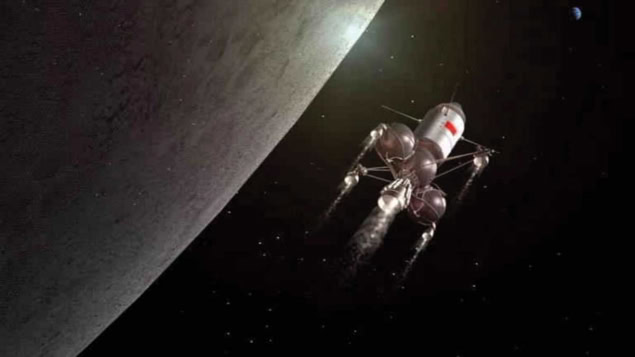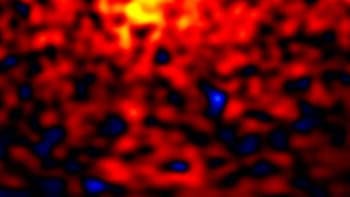With China about to send the first ever craft to the far side of the Moon, the country is quickly becoming a global leader in lunar exploration, as Ling Xin reports

When Zbigniew Brzezinski, a former US national security assistant, visited Beijing in 1978 he presented his Chinese host with a special gift: 1 g of lunar soil enclosed in plexiglass. At the time, few scientists in China knew how to deal with the sample, so geochemist Ziyuan Ouyang was summoned from the remote south-west to work on it. With limited instruments and techniques, his team studied half of the sample, deducing it was from Apollo 17 – the last manned mission to the Moon.
It was not until the late 1990s that China began to think about its own Moon programme. Ouyang and colleagues came up with an ambitious lunar plan, which was named after Chang’e, the mythical Chinese lunar goddess. They envisaged a series of unmanned missions – the first three of which were successfully launched in 2007, 2010 and 2013 – followed, eventually, by a manned mission. Now the last phase of China’s unmanned lunar exploration will begin with the launch of two more missions: in November Chang’e 5 is set to bring back 2 kg of lunar soil, while by the end of 2018 Chang’e 4 will land on the far side of the Moon for the first time in human history.
A major contribution
Chang’e 5’s mission, which is expected to last just a few days, will see the craft spend a few hours on the Moon’s surface at a site that has yet to be confirmed. It will drill into the soil and collect samples in a 2 m-long tube that can fit into the return capsule. “The Apollo and [Russian] Luna missions visited a total of nine sites, all on the near side quite close to the equator,” says Ian Crawford, a lunar exploration specialist from Birkbeck, University of London. “It is important to collect samples from other parts of the Moon and Chang’e 5 can make a major contribution.” Crawford adds that if China chooses to touchdown in the north-west of Oceanus Procellarum, as reported, it will be ideal because that region includes basalts of a wide range of ages, which will allow for a better understanding of how the lunar mantle evolved.
Clive Neal, a planetary geologist at the University of Notre Dame, US, is also excited about the prospect of investigating the Moon’s volcanic material, which has yet to be studied. “These samples will be important for understanding why volcanism occurred two billion years ago and to retrieve the mantle source and thermal history of the Moon,” he adds.
Ouyang told Physics World that any returned samples will first be studied by Chinese-based researchers via a proposal process. Applicants from outside China will also be invited to study the materials but will have to wait a year before getting their hands on them. Ouyang adds that a lot of the soils will be preserved at the National Astronomical Observatories of China (NAOC) in Beijing.
The far side
Due to tidal locking, the Earth only sees the near side of the Moon, with the far side not visible. Studies have indicated that there is a very different world on the far side, being geologically more ancient and dominated by highlands, unlike the plain landscape that prevails on the near side. Although both NASA and the European Space Agency have studied the feasibility of a mission to the far side, the Chinese are expected to be the first to visit.
Chang’e 4 was initially intended only as a back-up mission for the Chang’e 3 lunar lander but was repurposed to travel to the far side of the Moon following Chang’e 3’s success. The mission is expected to launch in late 2018 after China launches a relay satellite in mid-2018 that will be located at the Moon–Earth Lagrangian 2 point to help Chang’e 4 to communicate with Earth. Chang’e 4 will land in the South Pole-Aitken Basin area, which is the largest and possibly oldest impact basin on the Moon. The mission will not only include a topography camera and a penetrating radar but also a low-frequency radio antenna. The lunar far side is regarded among astronomers as one of the best places to measure the 21 cm hydrogen emission line that can be used to study the mass and dynamics of galaxies and will allow scientists to peer into “the cosmological dark ages” – a period between the Big Bang and the birth of the first stars.
Scientists will also aim to create a radio interferometer using Chang’e 4 by placing a radio antenna on the relay satellite as well as an antenna on two microsatellites that will orbit the Moon. “The mission will be very difficult, but if we succeed, we pave the way for a future large radio facility on or near the Moon,” says Marc Klein Wolt from Radboud University in Nijmegen, Netherlands, who is in charge of developing the antenna on the relay satellite.
Xuelei Chen from the NAOC, who is involved in the development of the two microsatellites, also highlights the uncertainty of this part of the mission. “We have a general idea of what to look at in this wavelength, but frankly, since this has never been done before, we are not sure what we will see,” Chen told Physics World. He adds that the main technical challenge is to reduce the radio noise of the satellite and lander. Failing to do so, he says, could “severely impact” the quality of the data it can collect.
Chang’e 4 is also the first time that China’s lunar programme has involved international collaborators, with four foreign-built payloads. “This is an important move and should be encouraged,” says Chi Wang from the National Space Science Center, who is deputy chief engineer of Chang’e 4 in charge of scientific payloads. “It will help clarify some misunderstandings about China’s purpose to explore the Moon. It can also promote lunar science in China in a more effective way.”
Beyond the Moon
China’s lunar endeavour, however, is not set to end with Chang’e 4. The to-do list after 2018 includes a possible sample-return mission from the far side, trips to the polar regions in search of water, as well as a Moon-based science station to be set up between 2020 and 2030 with long-running, unmanned research infrastructures. “I am sure science will be a major beneficiary of China’s lunar exploration programme,” says Crawford.
The to-do list after 2018 includes a sample-return mission from the far side, trips to the polar regions in search of water, as well as a Moon-based science station
Michel Blanc, an astronomer at the Research Institute in Astrophysics and Planetology in Toulouse, France, and executive director of the International Space Science Institute in Beijing, says that China is becoming the major player in lunar exploration. “When the time is ripe for China to select its scientific payloads via open international competition, it will be in the enviable position of being able to carry the best possible scientific investigations on the best-designed space missions: a key characteristics shared with the few leading space-faring nations on this planet,” he says.
Mars calling
With China’s Moon plans now firmly set, its scientists are already working on equally ambitious Mars plans. Though yet to be approved by the government, the first mission, which could launch in 2020, will consist of an orbiter, a lander and a rover and will involve collaboration with teams from Switzerland and Austria. “We are now developing the prototypes,” adds Wang. A second probe is expected to fly before 2030, which may involve bringing back samples from Mars.



